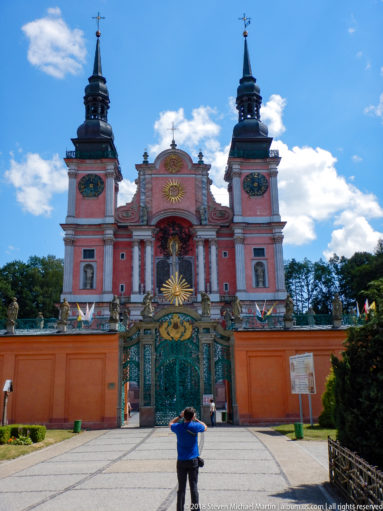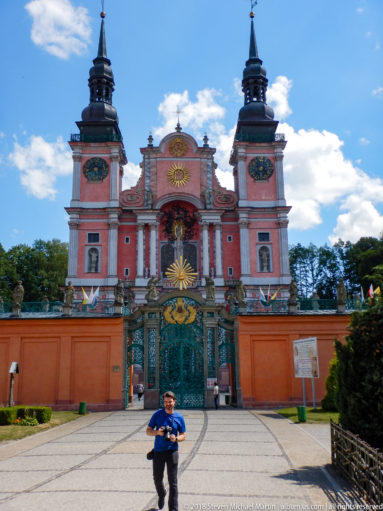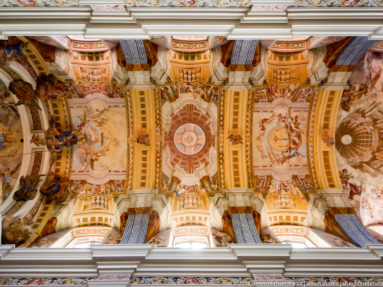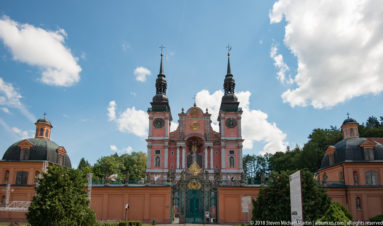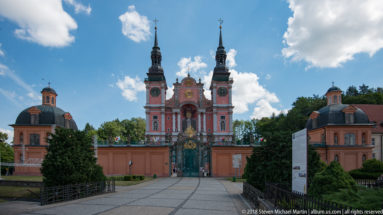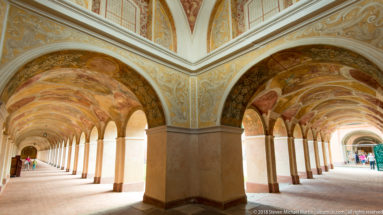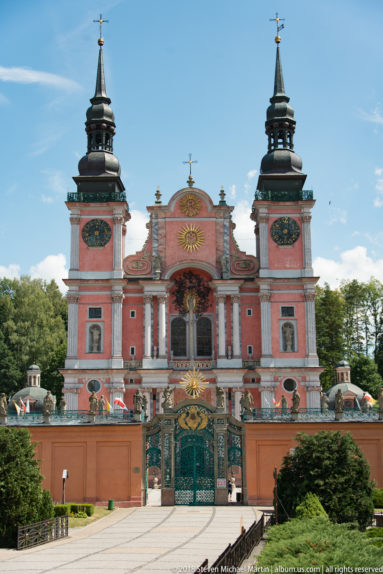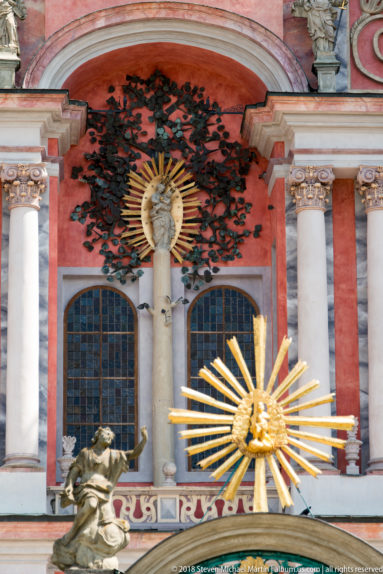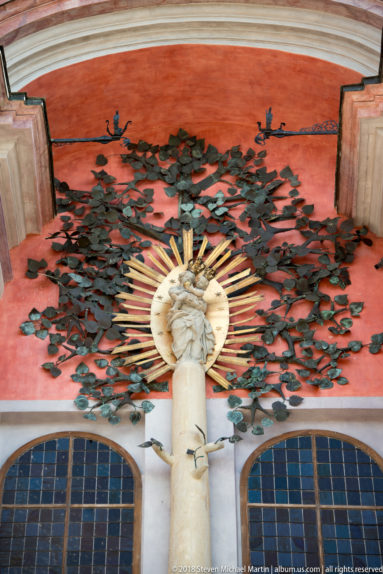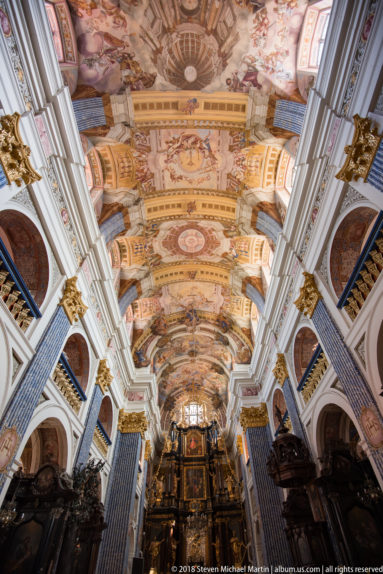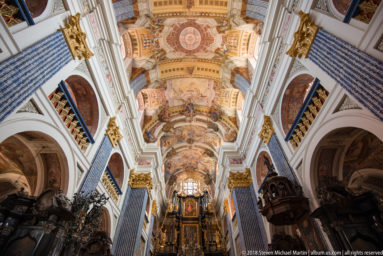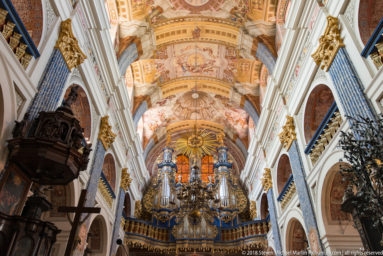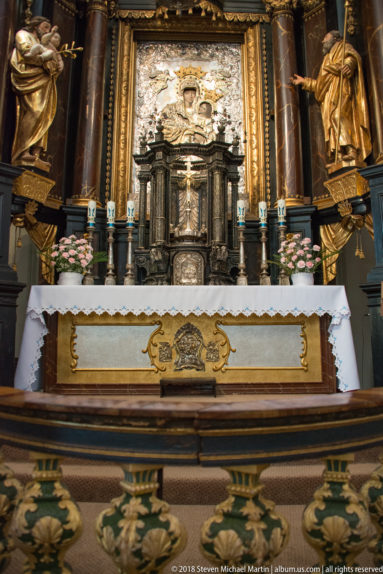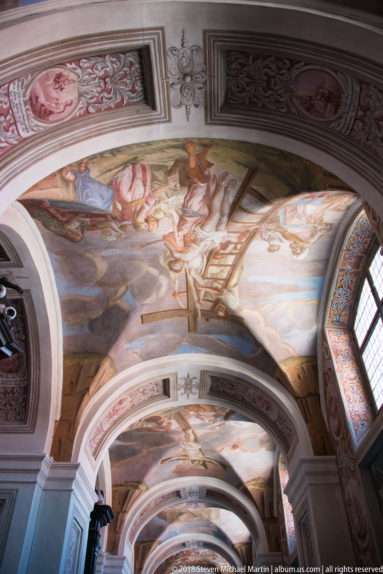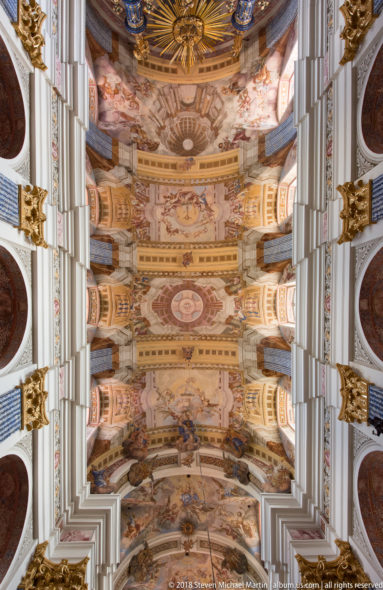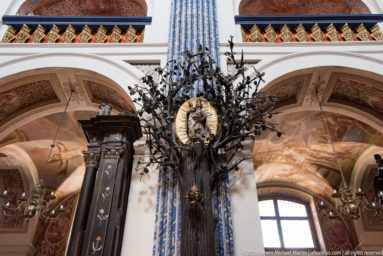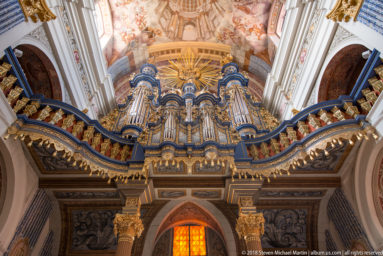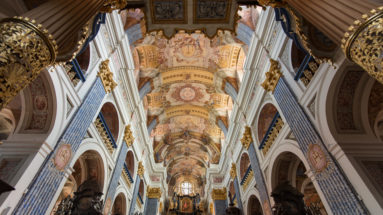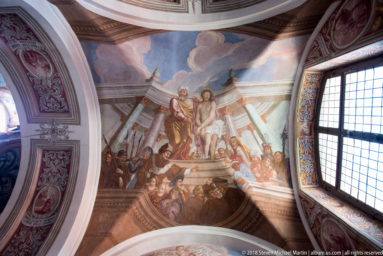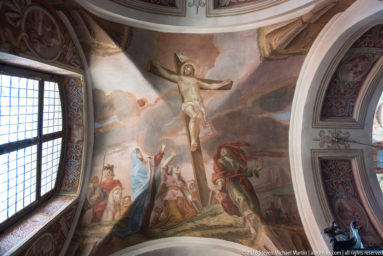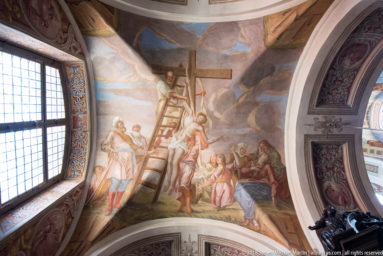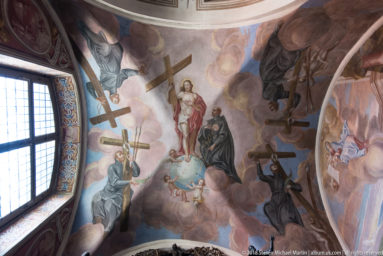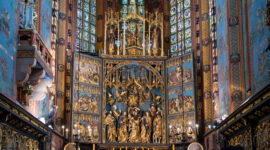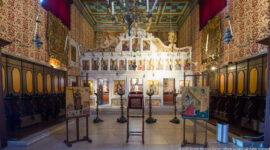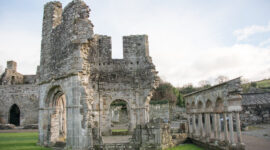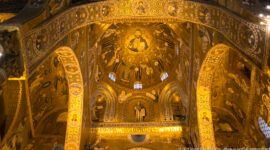This church in Northern Poland is named for a wooden statue of Mary (Heiligelinde, which means Holy Linden tree) under which miracles took place. While the current church dates from the 1600s, a chapel was deeded in 1491 by the Grand Master of the Teutonic Knights. Heiligelinde has been a pilgrimage site since then, but It was destroyed in 1525 during the Protestant Reformation, when the region became Lutheran.
Tthe Roman Catholic faith was again approved in East Prussia in 1605, after which the chapel was rebuilt by the Jesuits and consecrated in 1619. The current chapel became a popular pilgrimage site among the Roman Catholic populace of the surrounding counties as well as the Lutheran Masurians. The nave of the present church was finished in 1693 while the facade and the adjacent cloister were added by 1730.
When we stumbled on this church that appears to be in the middle of farms, we couldn’t believe how unique it looked on the outside. We waited for mass to let out (the mass had just begun), delaying other locations on the itinerary to have a close look. The baroque details and colorful interior were well worth the wait.

